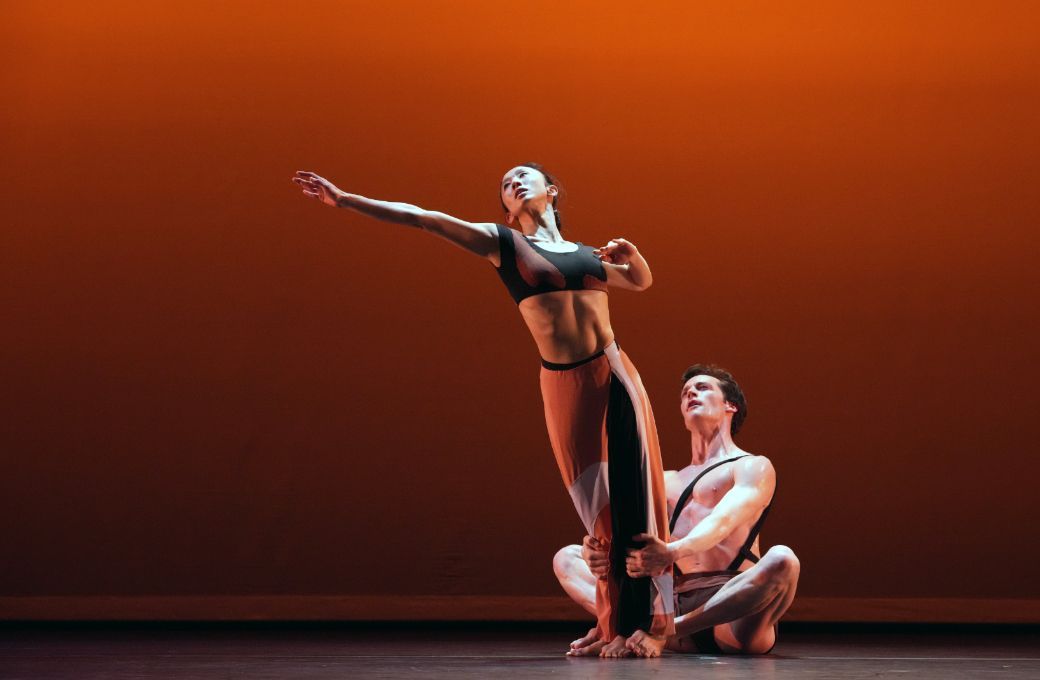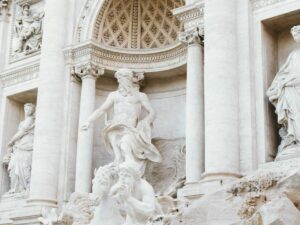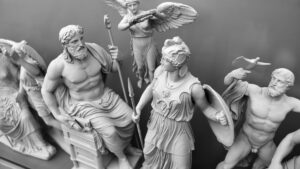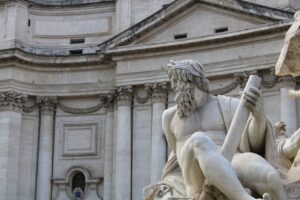Love stories have captivated human hearts for millennia, weaving tales of passion, sacrifice, and connection that transcend time. From the star-crossed lovers of ancient myths to the swipe-right romances of today, the essence of love remains a universal thread, yet the ways we tell these stories have evolved dramatically. In this deep dive, we’ll explore how ancient and modern love tales differ, what they share, and why they continue to resonate. Grab a cozy drink, settle in, and let’s journey through the ages to uncover the heartbeat of love stories.
The Roots of Romance: Ancient Love Tales
Ancient love stories are steeped in myth, legend, and divine intervention, often blending human emotion with cosmic stakes. These tales, whether carved on stone tablets or sung by bards, reflect the values and struggles of their time.
Love in Mythology: Gods and Mortals
In ancient Greece, love was often a divine affair. Take the story of Orpheus and Eurydice: Orpheus, a musician, descended into the underworld to retrieve his beloved Eurydice, only to lose her again due to a fateful glance. This tale, rooted in Greek mythology, showcases love’s power to defy death itself, yet it’s tinged with tragedy and the limits of human will. Such stories weren’t just entertainment; they were lessons about fate, devotion, and the gods’ whims.
Epic Love in Literature
Epic poems like The Iliad gave us Helen and Paris, whose forbidden love sparked the Trojan War. Their story, though romantic, was less about personal connection and more about destiny and societal upheaval. Ancient tales often prioritized duty or honor over individual desire, reflecting the communal values of the time. Helen wasn’t just a woman in love; she was a catalyst for war, her beauty a force of chaos.
Cultural Lens on Ancient Love
Ancient love tales varied by culture but shared a focus on external forces shaping romance:
- Egyptian Mythology: Isis and Osiris, a divine couple, symbolized love’s triumph over death, with Isis resurrecting her husband through magic.
- Indian Epics: In the Ramayana, Rama and Sita’s love endured trials of exile and abduction, emphasizing loyalty and dharma.
- Mesopotamian Tales: Inanna and Dumuzi’s love story blended fertility rites with divine passion, tying romance to the cycles of nature.
These stories often placed love within a larger cosmic or social framework, where personal feelings bowed to fate or duty.
Modern Love Tales: A New Narrative
Fast-forward to the 21st century, and love stories reflect a world of individualism, technology, and choice. Modern tales, whether in novels, films, or social media, focus on personal agency and emotional authenticity.
The Rise of Romantic Individualism
Today’s love stories prioritize personal choice over societal expectation. In The Notebook, Noah and Allie defy class differences to choose each other, a stark contrast to ancient tales where gods or kings often dictated outcomes. Modern narratives celebrate the individual’s right to love whom they choose, reflecting a shift toward personal freedom. This focus makes stories relatable, as readers see their own struggles in characters’ quests for authentic connection.
Technology’s Role in Modern Romance
Technology has reshaped how love stories unfold. Dating apps like Tinder or Bumble create instant connections, turning chance encounters into algorithm-driven matches. Films like Her explore love between a human and an AI, raising questions about intimacy in a digital age. Unlike ancient tales, where love often required epic quests, modern stories often begin with a swipe or a DM, making romance more accessible yet fleeting.
Diversity in Modern Love
Modern love tales embrace diversity in ways ancient stories rarely did:
- LGBTQ+ Narratives: Stories like Call Me by Your Name highlight same-sex love, celebrating identities once marginalized.
- Cross-Cultural Romances: Novels like Crazy Rich Asians explore love across cultural and economic divides.
- Non-Traditional Relationships: Shows like Modern Love depict polyamory, open relationships, and chosen families.
This inclusivity reflects a broader understanding of love, moving beyond the rigid norms of ancient societies.
Comparing Ancient and Modern Love Tales
While ancient and modern love tales differ in context, they share universal themes. Let’s break down the key differences and similarities.
| Aspect | Ancient Love Tales | Modern Love Tales |
|---|---|---|
| Setting | Mythical, divine, or epic (e.g., underworld, battlefields) | Everyday life, urban settings, or digital spaces |
| Focus | Fate, duty, divine will | Personal choice, emotional authenticity |
| Conflict | External forces (gods, wars, curses) | Internal struggles (self-doubt, societal pressure) |
| Resolution | Often tragic or sacrificial | Often hopeful or self-affirming |
| Medium | Oral tales, epic poems, stone carvings | Novels, films, social media posts |
Shared Themes
Despite their differences, both eras’ stories explore:
- Sacrifice: Orpheus risked all for Eurydice, just as modern characters like Jack in Titanic sacrifice for love.
- Longing: The ache of unrequited love in Sappho’s poems mirrors the yearning in Taylor Swift’s lyrics.
- Transformation: Love changes characters, from Psyche’s trials to become divine to Elizabeth Bennet’s growth in Pride and Prejudice.
Pros and Cons of Each Era’s Tales
Ancient Love Tales
Pros:
- Rich with cultural and historical depth
- Universal themes that resonate across time
- Poetic and symbolic storytelling
Cons:
- Often patriarchal or rigid in gender roles
- Limited focus on individual agency
- Can feel distant to modern readers
Modern Love Tales
Pros:
- Inclusive and diverse narratives
- Relatable, emotionally driven stories
- Accessible through multiple media
Cons:
- Can prioritize fleeting trends over depth
- Risk of oversimplification in digital formats
- Commercialization may dilute authenticity
Why Love Tales Endure
Love stories, whether ancient or modern, tap into our deepest desires: to connect, to be understood, to matter. I remember reading Romeo and Juliet as a teenager and feeling that electric pang of recognition—love could be all-consuming, even if it ended in tragedy. Years later, watching La La Land, I felt that same pang, but this time it was about love’s bittersweet compromises. Both stories, centuries apart, spoke to the same human truth: love is messy, beautiful, and worth it.
Emotional Resonance
Ancient tales used grandeur to evoke awe; modern tales use relatability to spark empathy. When I heard a friend describe meeting her partner on Hinge, it felt as epic as any myth—her modern-day quest for love involved swipes, awkward first dates, and a leap of faith. Both eras’ stories remind us that love is a journey, not a destination.
Cultural Reflection
Love tales mirror their societies. Ancient stories reinforced communal values, like loyalty in The Odyssey. Modern tales, like Everything Everywhere All At Once, reflect our fragmented, choice-driven world, where love can mean choosing family over ambition. These stories help us navigate our own cultural moment.
People Also Ask (PAA)
Below are real questions from Google’s “People Also Ask” section, answered concisely to optimize for featured snippets.
What is the difference between ancient and modern love stories?
Ancient love stories often involve divine intervention, fate, and societal duty, like Orpheus and Eurydice’s tragic tale. Modern love stories emphasize personal choice, emotional authenticity, and diverse relationships, as seen in films like The Notebook. The shift reflects changing cultural values from collective to individual priorities.
How did ancient people express love?
Ancient people expressed love through poetry, rituals, and epic narratives. For example, Sappho’s lyrical poems captured romantic longing, while myths like Isis and Osiris used divine acts to symbolize devotion. Love was often tied to cultural or religious duties, expressed through storytelling or offerings.
What are some famous ancient love stories?
Famous ancient love stories include Orpheus and Eurydice (Greek mythology), Rama and Sita (Ramayana), and Antony and Cleopatra (historical romance). These tales blend passion with tragedy, fate, or duty, reflecting the values of their cultures.
Where can I read ancient love tales?
You can read ancient love tales in translated texts like The Iliad (Homer), The Ramayana (Valmiki), or Sappho’s poetry collections. Online platforms like Project Gutenberg offer free translations, while libraries provide access to annotated editions for deeper context.
What are the best tools for writing modern love stories?
The best tools for writing modern love stories include Scrivener for organizing plots, Grammarly for editing, and Wattpad for sharing with readers. For inspiration, explore romance writing prompts on sites like Reedsy or join workshops on platforms like MasterClass.
Crafting Your Own Love Tale
Want to write your own love story, inspired by ancient or modern tales? Here’s how to start:
Informational: Understanding Love Stories
A love story needs a core conflict—be it fate, like in ancient myths, or personal doubt, like in modern novels. Study classics like The Aeneid or contemporary works like Me Before You to understand structure. Focus on authentic emotions and vivid settings to draw readers in.
Navigational: Finding Inspiration
Explore myths on sites like theoi.com for ancient tales or browse Wattpad for modern stories. Visit local libraries for rare translations or join online communities like Reddit’s r/romancebooks to discuss what makes love stories tick. Inspiration is everywhere—find it in your own experiences, too.
Transactional: Tools for Storytelling
Use these tools to craft your tale:
- Scrivener: Organize complex plots and character arcs.
- Grammarly: Ensure polished, error-free prose.
- Canva: Create mood boards for visual inspiration.
- ProWritingAid: Analyze pacing and emotional tone.
FAQ Section
How do ancient love tales influence modern stories?
Ancient love tales provide archetypes—like star-crossed lovers or sacrificial devotion—that inspire modern narratives. For example, Romeo and Juliet echoes in West Side Story, blending timeless themes with contemporary settings. Their emotional depth ensures lasting influence.
Why are modern love stories more diverse?
Modern love stories reflect societal shifts toward inclusivity, embracing LGBTQ+ relationships, cross-cultural romances, and non-traditional dynamics. Media like Pose or Heartstopper amplify marginalized voices, responding to readers’ demand for representation.
Can ancient love stories still resonate today?
Yes, ancient love stories resonate through universal themes like longing and sacrifice. Modern adaptations, like Circe by Madeline Miller, reframe myths for today’s readers, proving their timeless appeal.
What makes a love story engaging?
An engaging love story combines relatable characters, emotional stakes, and vivid storytelling. Whether it’s the epic trials of Odysseus or the quiet intimacy of Normal People, authenticity and conflict keep readers hooked.
How can I optimize my love story for online readers?
Use SEO tools like Semrush to find trending keywords (e.g., “romantic short stories”). Structure your story with clear headings, short paragraphs, and emotional hooks. Share on platforms like Medium or Wattpad to reach readers.
Final Thoughts
Love tales, ancient or modern, are mirrors of the human heart. Ancient stories remind us of love’s mythic power, while modern tales celebrate its personal, messy beauty. Both teach us that love is worth the fight, whether against gods or algorithms. So, next time you swipe right or read a myth, remember: you’re part of a story as old as time, yet endlessly new.








